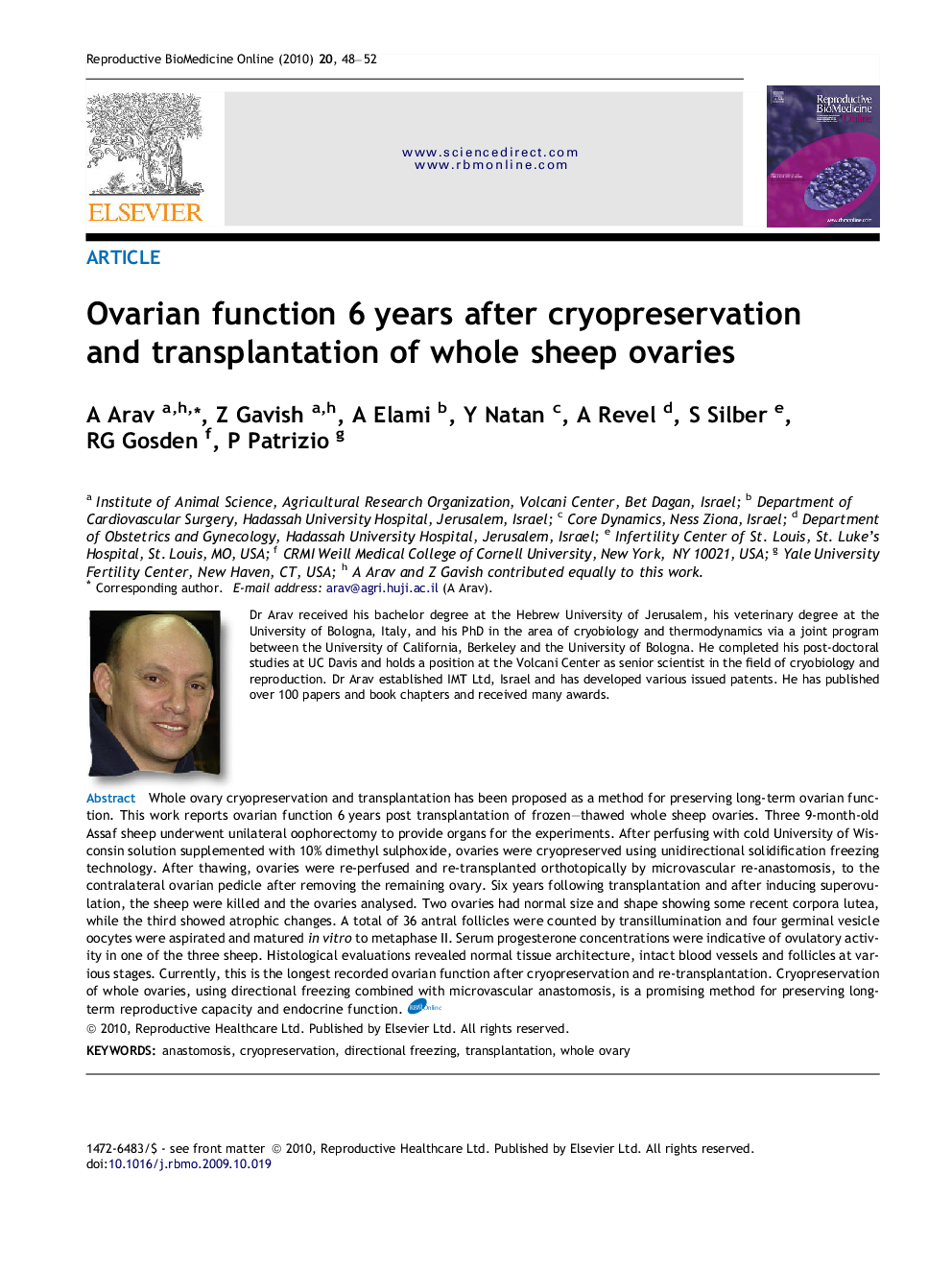| Article ID | Journal | Published Year | Pages | File Type |
|---|---|---|---|---|
| 3971908 | Reproductive BioMedicine Online | 2010 | 5 Pages |
Whole ovary cryopreservation and transplantation has been proposed as a method for preserving long-term ovarian function. This work reports ovarian function 6 years post transplantation of frozen–thawed whole sheep ovaries. Three 9-month-old Assaf sheep underwent unilateral oophorectomy to provide organs for the experiments. After perfusing with cold University of Wisconsin solution supplemented with 10% dimethyl sulphoxide, ovaries were cryopreserved using unidirectional solidification freezing technology. After thawing, ovaries were re-perfused and re-transplanted orthotopically by microvascular re-anastomosis, to the contralateral ovarian pedicle after removing the remaining ovary. Six years following transplantation and after inducing superovulation, the sheep were killed and the ovaries analysed. Two ovaries had normal size and shape showing some recent corpora lutea, while the third showed atrophic changes. A total of 36 antral follicles were counted by transillumination and four germinal vesicle oocytes were aspirated and matured in vitro to metaphase II. Serum progesterone concentrations were indicative of ovulatory activity in one of the three sheep. Histological evaluations revealed normal tissue architecture, intact blood vessels and follicles at various stages. Currently, this is the longest recorded ovarian function after cryopreservation and re-transplantation. Cryopreservation of whole ovaries, using directional freezing combined with microvascular anastomosis, is a promising method for preserving long-term reproductive capacity and endocrine function.
